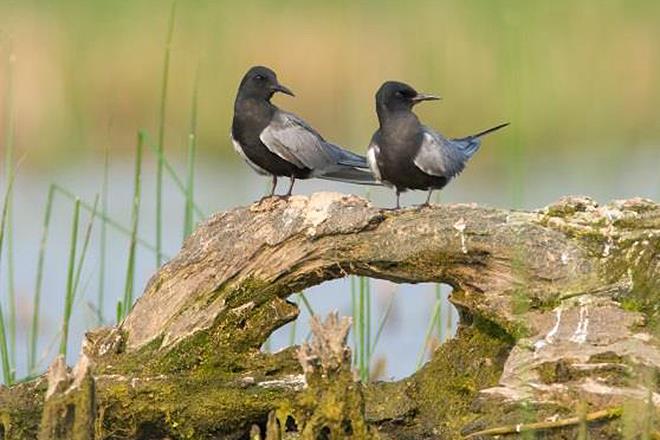
Open Ocean Trustee Implementation Group seeks public comment on its First Draft Restoration Plan
by NOAA Fisheries 13 Oct 2018 12:45 UTC

Black Terns © NOAA Fisheries
The Open Ocean Trustee Implementation Group has released its Draft Restoration Plan 1 and Environmental Assessment (PDF, 141 pg) for the bird and sturgeon restoration types described in the Trustees' Programmatic Restoration Plan.
Restoration Plan 1 evaluates six project alternatives, plus a "no action" alternative. Two projects propose restoration activities for injured migratory bird species that winter in the Gulf of Mexico, but nest in northern latitudes. The Trustees have determined that these bird species may be most effectively restored by enhancing breeding success in areas where these birds nest. The draft plan proposes funding for three projects at a total estimated cost of $16 million. Each of the projects proposed for funding is described below. We encourage you to register for our public webinars to learn more about the plan, and submit your comments via our comment portal, or U.S. mail by November 9.
Project Alternatives
Restoration of Common Loons in Minnesota, USA
The objective of this project is to reduce mortality and increase reproductive success of common loons at breeding, nesting, and resting locations in Minnesota. Proposed activities include acquisition and/or easements of lakeshore loon nesting habitat, enhancing loon productivity by providing artificial nesting platforms in targeted lakes and engaging Minnesota lake associations in loon conservation activities, and reduction of loon exposure to lead-based fishing tackle. The estimated cost of this project alternative is $7,520,000.
Restoration of Black Terns in North and South Dakota
This proposed project would protect wetland habitat and adjacent upland grassland habitat to enhance and improve breeding sites and foraging conditions for black terns in more than 30 counties in North and South Dakota located in the Prairie Pothole Region. Conservation easement agreements would be implemented on a voluntary basis with participating landowners as part of ongoing United States Fish and Wildlife Service conservation programs in those states. The estimated cost of this project alternative is $6,250,000.
Characterizing Gulf Sturgeon Spawning Habitat, Habitat Use and Origins of Juvenile Sturgeon in the Pearl and Pascagoula River Systems
This proposed project would identify and characterize potential Gulf sturgeon spawning habitat in the Pearl and Pascagoula River systems; describe habitat accessibility and patterns of habitat use during spawning periods, and determine the river of origin for juvenile sturgeon; and synthesize the data needed to evaluate and prioritize Gulf sturgeon spawning habitat restoration projects such as in-stream barrier removal, spawning reef creation, or riparian restoration. The estimated cost of this project alternative is $2,150,000.
Public Webinars
We will present the draft restoration plan during two public webinars. To attend a webinar please register at the link below.
- October 16, 2108 from 12:00 – 12:45 p.m. CST. You can register here. (GoToWebinar ID: 113-950-795)
- October 17, 2018 from 6:00 – 6:45 p.m. CST. You can register here. (GoToWebinar ID: 944-986-443)
We recommend doing a
GoToWebinar system check before attending. If you are unable to join the webinars during the dates and times indicated above, the presentations will be available on
www.gulfspillrestoration.noaa.gov by October 19.
Please contact Nanciann Regalado, , by October 12, 2018, if you need assistance due to a hearing or visual impairment. Comments will not be taken during the webinars; they will be taken via our web comment portal and U.S. mail as described below.
Submit Comments
We encourage you to submit comments on the Draft Restoration Plan 1 and its proposed projects. Comments can be submitted via:
Public comments will be accepted on or before November 9, 2018.
Open Ocean Draft Restoration Plan 1 Documents